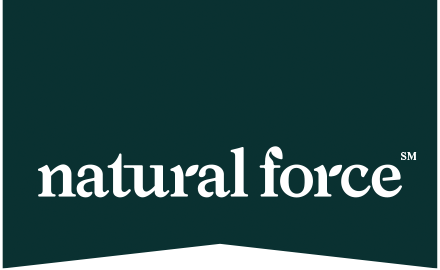What is Natural Vanilla Flavor? Everything You Need to Know.

What is natural vanilla flavor? Well, vanilla is one of the most prized spices in the world, and one of the hardest to grow, making natural vanilla flavor a hot commodity in the food industry. People love the taste of vanilla. So, what’s a manufacturer to do when vanilla is clocking in at more than $200 per pound? Or when there’s not even enough to go around? Why, they recreate the flavor and call it 'natural vanilla flavor'!
In this article you will learn:
- What natural vanilla flavor is
- The difference between natural and artificial flavors
- Is natural flavor harmful to your health?
- Vegan vs. non-vegan natural vanilla flavor
- What to look for in vanilla-flavored products
What is Natural Vanilla Flavor?
All flavors, whether natural or man-made, are made up of chemical compounds that bind with taste receptors in your mouth. That means, your mouth doesn’t really know the difference between an actual vanilla bean and vanilla flavoring derived from tree bark - as long as the chemical structures are similar.
That’s where the term “natural flavors” comes in. Long ago, scientists figured out how to recreate certain flavors out of wildly different substances. For instance, taking some chemical constituents from corn and making vanilla that tastes great in ice cream. Technically, the flavor is derived from a natural substance.
The FDA defines the term “natural flavor” as anything derived from something a normal person would consider food. For instance, corn, cloves, and rice bran all contain chemical structures that scientists can manipulate into vanilla flavoring.
So, if the chemical structure is the same, what’s the problem with lab-derived vanilla? And are natural flavors harmful to your health?
The Difference Between Natural and Artificial Flavors
If they’re all technically chemicals, how are natural flavors different from artificial flavors? It depends on the processing. In order to get from tree bark to vanilla flavoring, manufacturers add solvents, preservatives, and other chemicals. And they don’t have to disclose any of this on the label. Oftentimes, these additives make up most of the flavoring - up to 80-90%, to be exact. The result is a flavoring agent that’s anything but “natural.”
Solvents and other chemicals used to make natural flavors aren’t that different from those used in artificial flavors. The only real difference between the two is their origin. Natural flavors technically have to start as something that resembles food. Artificial flavors, on the other hand, are derived from man-made chemicals.
Shop Now!
Are Natural Flavors Harmful to Your Health?
The short answer is, probably not. It’s unlikely you’re eating enough chemical-laden vanilla flavoring to do much damage.
The bigger issue is transparency. The term “natural” suggests that the ingredient is healthy, when the reality can be much different. For instance:
- You may start to expect certain flavors that don’t exist in real food
- Artificial and lab-made natural flavors may induce food cravings
- Artificial and natural flavors are used to cover the taste of other chemicals or rancid ingredients
- May lead to headaches and small allergic reactions in some people
Another reason to stick to natural vanilla or vanilla extracts: there are health benefits to using real vanilla. Vanilla is a potent antioxidant and has some antimicrobial properties.
Is Your Natural Vanilla Flavor Vegan?
The rumors are true. Scientists are able to create vanilla flavors out of a beaver’s anal secretions. Technically called castoreum (and technically secreted from a special gland right next to the anus), the thick, brownish goo smells rather pleasant even before processing. But although castoreum-based vanilla has been used in food and fragrances for decades, it’s rare you’ll find beaver-derived vanilla in any of your food today. This type is used primarily in fragrances for things like lotion and candle wax.
In terms of safety? There don’t seem to be any reports of adverse reactions in humans, whether taken internally or used externally. Is it gross to eat beaver butt goo? We’ll let you be the judge.
Researchers also managed to isolate a vanilla taste from cow dung. Cow dung is rich in lignans, a compound found in grass and other plants that contain the vanilla scent. But don’t worry; creators of dung-derived vanilla flavor insist it won’t be used in food either.
What to Look For In Vanilla-flavored Products
The best way to figure out what’s in your natural vanilla flavoring is to ask. Labeling requirements are pretty lax and companies can get away with a lot by calling an ingredient “proprietary.” And we’ve already seen how the government defines “natural flavor.” Go with companies that are transparent about their ingredients and production process. If they don’t have it directly on their website, just contact them. The good guys will share the details.
Here’s our checklist for the highest quality products:
- Certified organic ingredients
- Free of artificial flavors and dyes
- Lab tested for unnecessary chemicals and mold
- Vanilla flavoring that is certified by the manufacturer as vegan
At Natural Force, our natural vanilla flavoring is truly natural, made from real vanilla bean extract and vanillin derived from clove oil.
Check out the difference in taste in our Vanilla Bean Organic Whey Protein, and Creamy Vanilla MCT Oil!
(Want to get articles like this by email? Here's the sign up)

